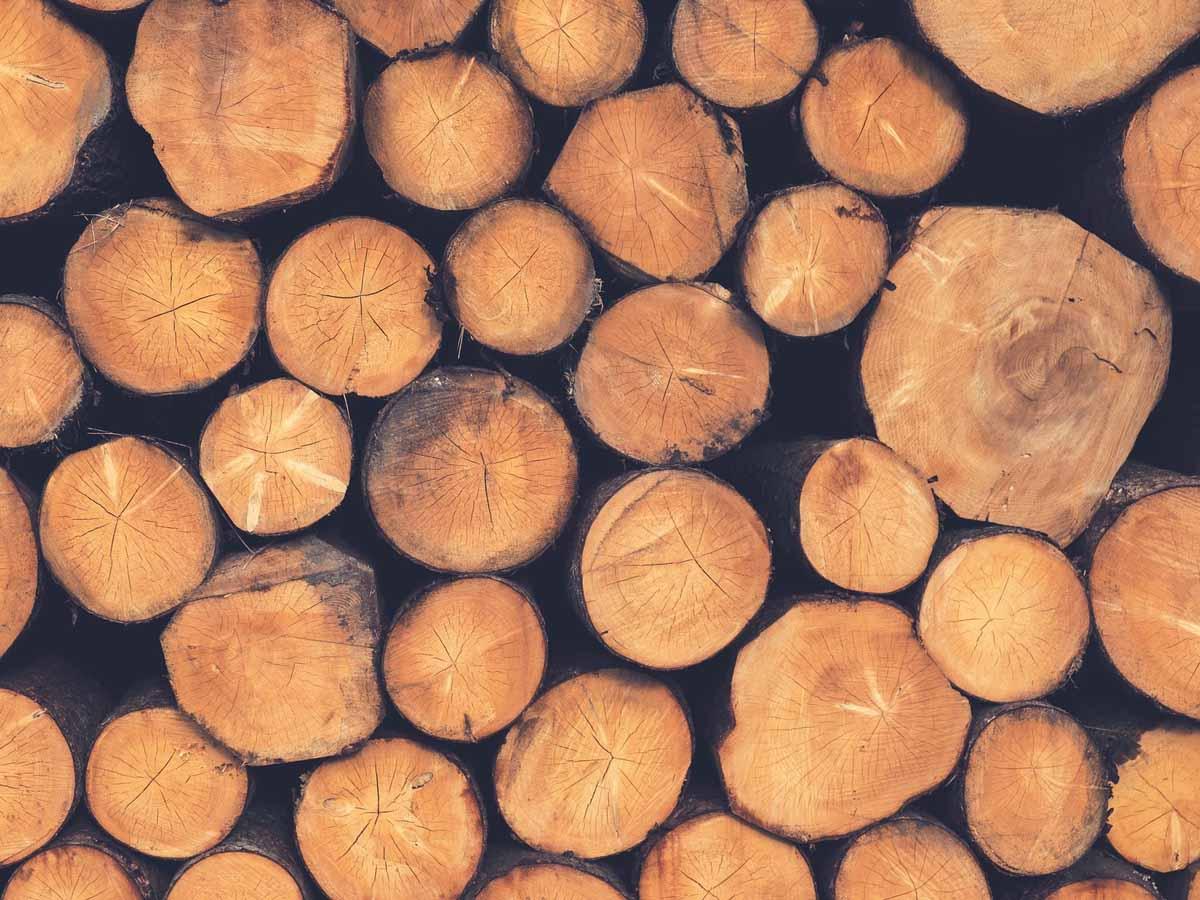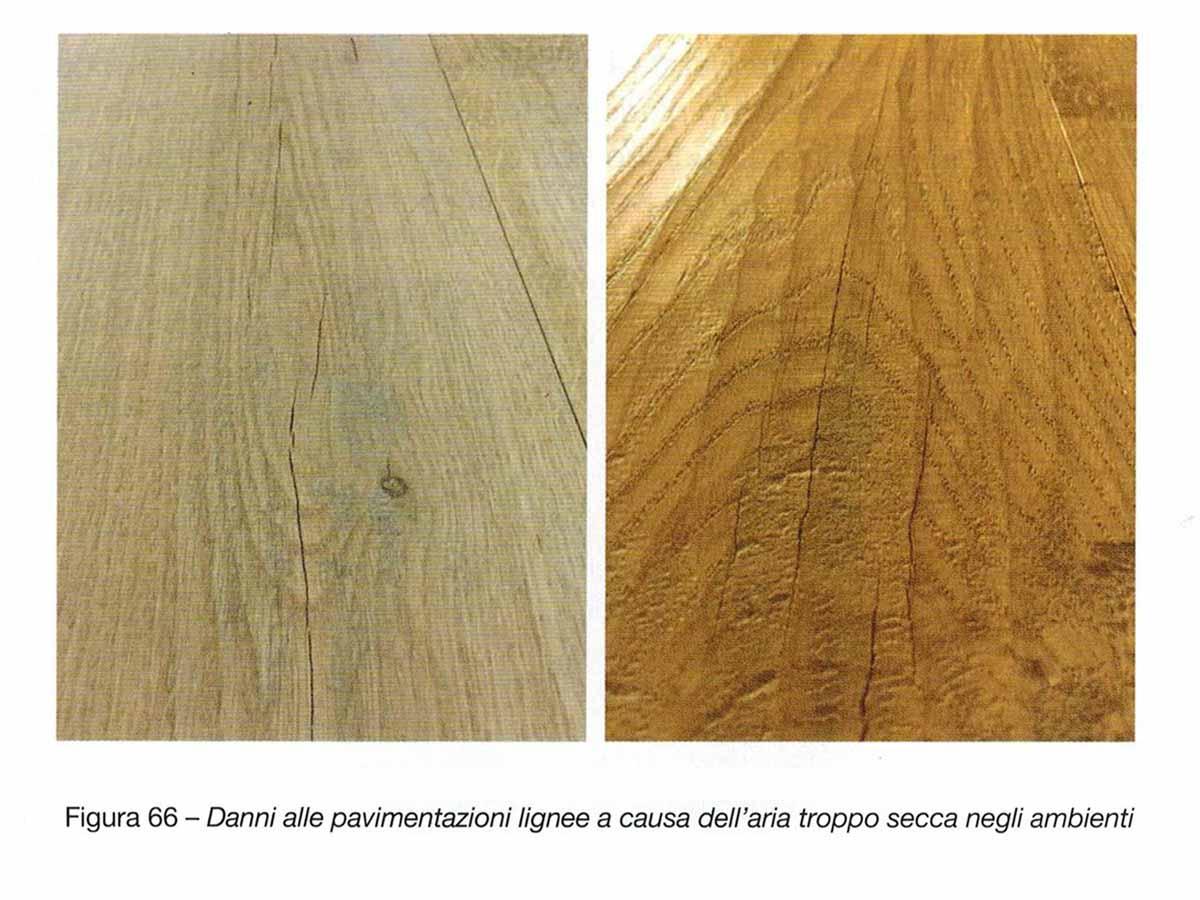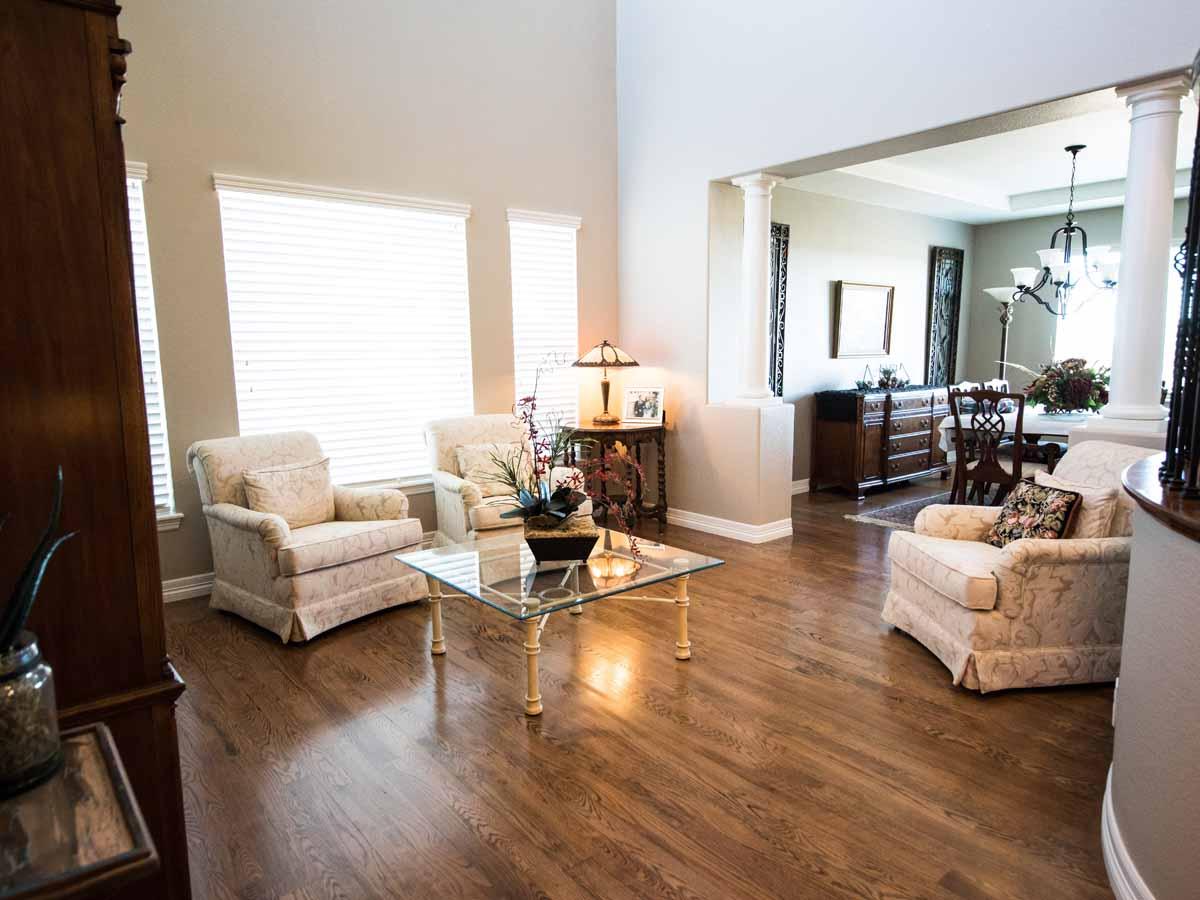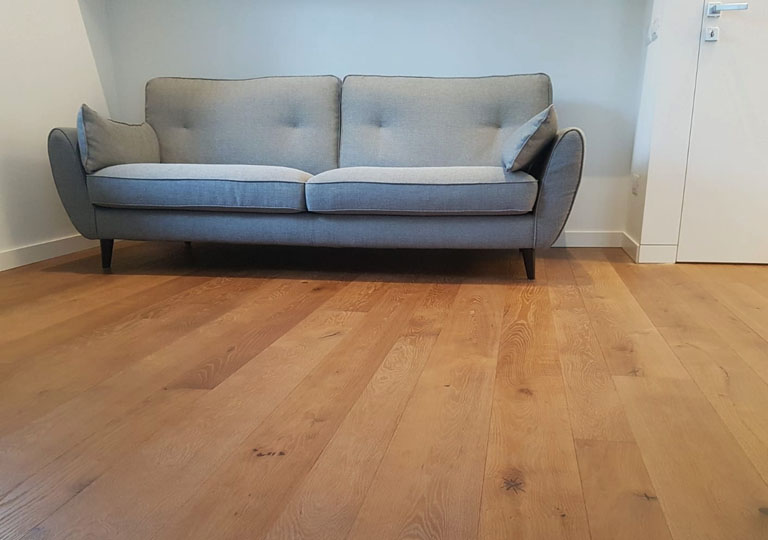Parquet, humidity and mould: prevention and care


During this process, as wood loses water, the wood proportionally reduces its volume. Being a living material, it preserves over time the ability to vary its volume based on environmental humidity.
Wood relates to water since the beginning: trees absorb humidity from the soil for its life-cycle and it flows through the fibres, in a process of constant rebalancing between absorbed moisture and dispersed moisture, which lasts for its entire life.
When a tree is freshly cut has a average moisture content of around 30%. This water content needs to be reduced before the wood can be used for the various destinations of use. For this reason it is necessary to pass through a period of drying and it is possible to consider it ready for processing when the humidity has dropped to around 10%.
As with all living elements, water plays a fundamental role for wood too: first during the growth and development of the tree, then during the drying phase and finally - and this is what we care the most - when it becomes floor.

Feeling good inside a room can be the right criteria to consider, in an easy way, which are the ideal conditions for the well-being of a wood floor.
We all know how we feel on a very hot and sultry summer day: we feel tired, heavy and it is not uncommon for our hands or feet to swell. On the other hand - in a room that is too dry, or with low temperature oustise - we feel our nose and throat scratching and the skin that pulls even to crack.
The same happens for wood: in the absence of the right balance, wood’s grain absorbs water or dehydrates, just like it happens for our skin. In order for the wood floor to remain healthy, it is important to protect it from extreme situations.
As we said, wood is a living material, which by its nature always tends to balance its humidity with that of the environment in which it is located, until it reaches a balance that is technically defined as hygrometric equilibrium. If the environment is very charged with humidity, the wood will tend to absorb it, while on the contrary, if the environment is very dry, it will give up its interior. The result? In the first case we will find the wood floor filled with water, in the second there will be cracks and micro-cracks opening on the surface. For this reason, unsuitable environmental conditions can lead to stressful situations for the wood floor and it may affect its duration, as well as its appearance. When it comes to solid wood floor, this mechanism is particularly relevant, while with an engineered wood floor, the different layers construction is specifically designed to minimize these effects.
The image 66 represented above is taken from the book “Il sistema pavimento: pavimentazioni in legno abbinate ai sistemi radianti" - Maggioli Editore.

What to do then to be able to enjoy a wooden floor without worries? The first step is undoubtedly to be done during the design phase: it must be verified that the space in which we want to lay the wood floor is not subject to rising damp and infiltration. In this case - also for the general well-being in the home - the advice is always to take the possible measures to stem these phenomena. The same applies to the presence of mould: it is essential to check that the surfaces are healthy, free from any stains. Here too, where necessary, we recommend proceeding with an ad-hoc treatment before laying the wood floor. Another good rule is to avoid large and sudden changes in temperature, in the rooms where a wood floor is installed. For example, when you restart the heating system, we recommend to do it progressively. It is also important to check that the air does not become too dry. Another good habit is to ventilate the rooms, frequently and regularly: it is the easiest way to disperse any excess moisture that is normally formed in rooms with daily use: body heat, cooking steam or that of shower, and so on. As a general indication, we recommend air humidity of 50-55%, without large and sudden temperature variations, like peaks of heat or cold. A good and easy solution is to have everything under control by using a thermo-hygrometer. Do not be intimidated by the name, it is now an easy tool to find and use and for a few dozen euros you can find really good ones on the market.
In short, a healthy floor, when it is installed properly, after the necessary checks, is within everyone's reach. The golden rule? In the end we can summarize it this way: if it is good for your health it is also good for your parquet!



